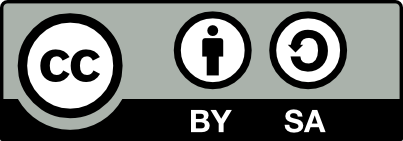Abstract
The effects of friction were observed in electric guitar strings passing over an electric guitar saddle. The effects of changing the ratio of the diameter of the winding to the diameter of the core of the string, the angle through which the string is bent, and the length on either side of the saddle were measured. Relative tensions were deduced by plucking and measuring the frequencies of vibration of the two portions of string. Coefficients of friction consistent with the capstan equation were calculated and were found to be lower than 0.26 for wound strings (nickel plated steel windings on steel cores) and lower than 0.17 for unwound (tin plated steel) strings. The largest values of friction were associated with strings of narrower windings and wider cores and this may be due to the uneven nature of the contact between the string and saddle for wound strings or due the surface of the windings deforming more, encouraging fresh (and therefore higher friction) metal to metal contact. It is advised to apply lubrication under the saddle to string contact point after first bringing the string up to pitch rather than before in order to prevent this fresh metal to metal contact.Keywords:
guitar, string, friction, saddle, capstan, equation, bridgeReferences
1. Boersma P., Weenink D. (2018), Praat: doing phonetics by computer (computer program), http://www.fon.hum.uva.nl/praat/., accessed 31-July-2018.
2. Drosg M. (2009), Dealing with uncertainties: a guide to error analysis, Springer Science & Business Media, Ch. 3, pp. 17, https://doi.org/10.1007/978-3-642-01384-3.
3. Fender C.L. (1956), Tremolo device for stringed instruments, US Patent 2,741,146, Apr. 10, http://www.google.co.uk/patents/US2741146.
4. French A. (1971), Vibrations and Waves, CRC Press, Ch. 6, pp. 161–200.
5. Kemp J.A. (2017), The physics of unwound and wound strings on the electric guitar applied to the pitch intervals produced by tremolo/vibrato arm systems, PLOS ONE, 12, 9, 1–25, https://doi.org/10.1371/journal.pone.0184803.
6. Lim S., Ashby M., Brunton J. (1989), The effects of sliding conditions on the dry friction of metals, Acta Metallurgica, 37, 3, 767–772, https://doi.org/10.1016/0001-6160(89)90003-5.
7. Quirk T.J. (2016), Sample Size, Mean, Standard Deviation, and Standard Error of the Mean, [in:] Excel 2016 for Engineering Statistics, Springer, pp. 1–20, https://doi.org/10.1007/978-3-319-39182-3.
8. Ramsdale R. (2006), Engineer's Handbook, http://www.engineershandbook.com/Tables/frictioncoefficients.htm., accessed 22-June-2018.
9. Rose F. (1979), Guitar tremolo method and apparatus, US Patent 4,171,661, Oct. 23, http://www.google.co.uk/patents/US4171661.
10. Straffelini G. (2015), Friction, [in:] Friction and wear: methodologies for design and control, Springer, Ch. 2, pp. 21–60, https://doi.org/10.1007/978-3-319-05894-8.
11. Stuart I.M. (1961), Capstan equation for strings with rigidity, British Journal of Applied Physics, 12, 10, 559–562, https://doi.org/10.1088/0508-3443/12/10/309.
12. Varieschi G.U., Gower C.M. (2010), Intonation and compensation of fretted string instruments, American Journal of Physics, 78, 1, 47–55, https://doi.org/10.1119/1.3226563.
2. Drosg M. (2009), Dealing with uncertainties: a guide to error analysis, Springer Science & Business Media, Ch. 3, pp. 17, https://doi.org/10.1007/978-3-642-01384-3.
3. Fender C.L. (1956), Tremolo device for stringed instruments, US Patent 2,741,146, Apr. 10, http://www.google.co.uk/patents/US2741146.
4. French A. (1971), Vibrations and Waves, CRC Press, Ch. 6, pp. 161–200.
5. Kemp J.A. (2017), The physics of unwound and wound strings on the electric guitar applied to the pitch intervals produced by tremolo/vibrato arm systems, PLOS ONE, 12, 9, 1–25, https://doi.org/10.1371/journal.pone.0184803.
6. Lim S., Ashby M., Brunton J. (1989), The effects of sliding conditions on the dry friction of metals, Acta Metallurgica, 37, 3, 767–772, https://doi.org/10.1016/0001-6160(89)90003-5.
7. Quirk T.J. (2016), Sample Size, Mean, Standard Deviation, and Standard Error of the Mean, [in:] Excel 2016 for Engineering Statistics, Springer, pp. 1–20, https://doi.org/10.1007/978-3-319-39182-3.
8. Ramsdale R. (2006), Engineer's Handbook, http://www.engineershandbook.com/Tables/frictioncoefficients.htm., accessed 22-June-2018.
9. Rose F. (1979), Guitar tremolo method and apparatus, US Patent 4,171,661, Oct. 23, http://www.google.co.uk/patents/US4171661.
10. Straffelini G. (2015), Friction, [in:] Friction and wear: methodologies for design and control, Springer, Ch. 2, pp. 21–60, https://doi.org/10.1007/978-3-319-05894-8.
11. Stuart I.M. (1961), Capstan equation for strings with rigidity, British Journal of Applied Physics, 12, 10, 559–562, https://doi.org/10.1088/0508-3443/12/10/309.
12. Varieschi G.U., Gower C.M. (2010), Intonation and compensation of fretted string instruments, American Journal of Physics, 78, 1, 47–55, https://doi.org/10.1119/1.3226563.



